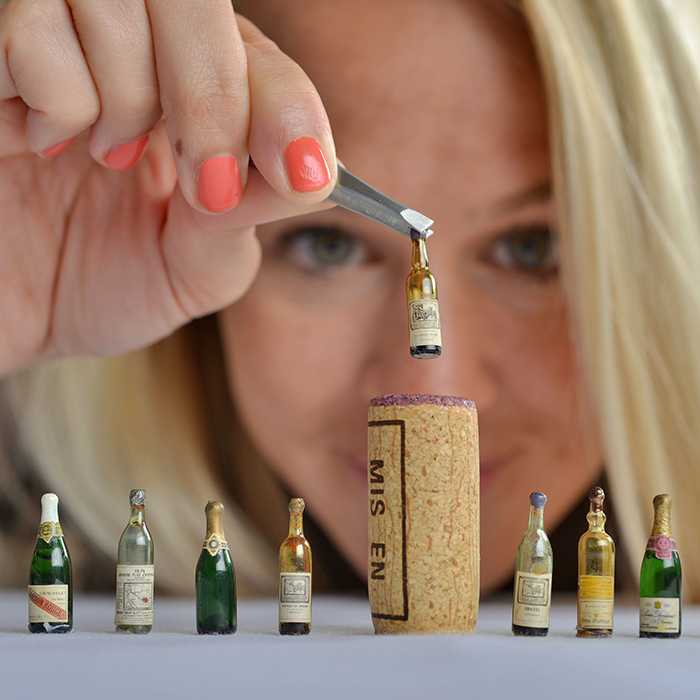Mystery in miniature
Author: Guest Blogger

In Berry Bros. & Rudd’s home at No.3 St James’s Street, as well as many drinkable treasures, are price lists back to February 1907. Likely the best Port in that first remaining list is Croft 1878, at the princely sum of 132 shillings per dozen – in modern money, a mighty £0.55 per bottle. Cheaper, “for laying down”, were several shippers’ 1904s at only 32/- per dozen, being £0.13⅓ per bottle. Times have sadly changed and – while Port still seems to offer exceptional value to me – it isn’t quite as much of a bargain.
Documents such as these have been the main sources for my book, Port Vintages. The hunt for details of rare and old Ports took me far across the land and abroad, rifling through records in 19th century cellar books; minutes of Wine Committees of Cambridge and Oxford colleges, livery companies and Inns of Court; lists of department stores and wine merchants – including those at No.3.
My favourite discovery from the Berry Bros. & Rudd archives relates to Queen Mary’s Dolls’ House. The company was charged with creating a perfect cellar, in miniature format, for this most regal of dolls’ houses. Unlike most dolls’ houses, each and every bottle included the real liquid – whether it was First Growth Claret, vintage Champagne or indeed Port.
A history of Berry Bros. & Rudd published in 1950 lists the contents of this minute cellar, including an 1851 Cockburn Vintage Port, well chosen by Francis Berry. A 1988 history of the Dolls’ House, however, claims that the only Ports in the one-twelfth scale cellar were two dozen of each of 1878 Cockburn, 1896 Taylor, 1900 Warre, 1908 Fonseca, 1912 Dow (in magnum), and “Royal Tawny” (which, if true, would still be well chosen).
The mystery is, which Cockburn was it really: ’51 or ’78? I sought an answer from the Royal Collection and I was informed that, in terms of Port, there were the following tiny bottles: 94 “unidentified”; 21 “Dow’s Port”; 21 “Royal Tawny Port, Berry Bros”; and two dozen “Tawny Port, W&A Gilbey”.
Even if the Royal Collection could be persuaded to allow a (tiny) taste test, there are very few people alive who could reliably distinguish between an 1851 and an 1878 — though I’d be willing to try. For now, at least, this milliscule mystery remains unsolved.
Julian Wiseman’s book Port Vintages is available to pre-order now. Including abundant detail about every old Vintage Port, George Sandeman has described it as “the definitive reference book on old Vintage Port”. Please note the book is being printed to order, so pre-ordering is essential to secure a copy.



Maybe I am getting the wrong end of the stick here, but 132 shillings per dozen is not £0.55 in ‘modern’ money; it might be when converted to a decimal, i.e. 132 shillings is 1,584p or £6.6 pounds (240p in a £) so on a per bottle basis it was £0.55 in 1907. However, any simple inflation calculator tells you that £6.6 in 1907 is roughly £550 today, so in ‘modern’ money it would be equivalent to £46 per bottle. Admittedly cheaper than buying a great vintage from 30 years ago today, but not as dramatically so as first meets the eye? I could be wrong, had a long lunch in the city…
Josh,
You are absolutely correct, the £0.13⅓ per bottle was not adjusted for inflation.
Adjusting for inflation is about relative prices. But would it be appropriate to be relative to the price of land? Or the price of a car? Or to a butler’s salary, or his Lordship’s income, or national GDP, or even GDP per head?
These are quite different — the choice depends on the question being asked. Perhaps the most natural answer would be relative to the price of a very good mature Vintage Port. If the Office for National Statistics were to start such a price series, it might well gather data from catalogues of Berry Bros. (& Rudd). By which measure, of course, the price of old Vintage Port won’t have changed!
— Julian Wiseman, http://www.PortVintages.com
Port Vintages is clearly an absolute masterpiece, completed through many years of dedicated research. I have already placed my order. It will be a fascinating read and an indispensable reference book.